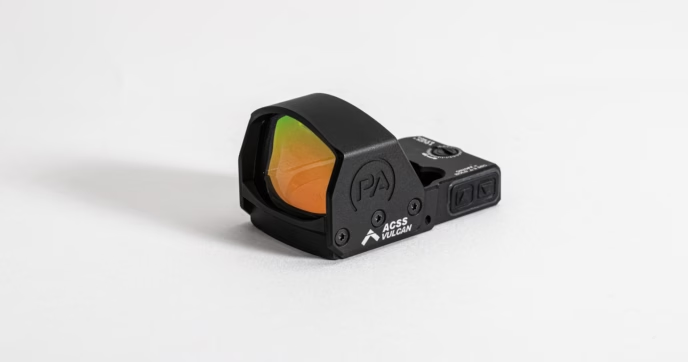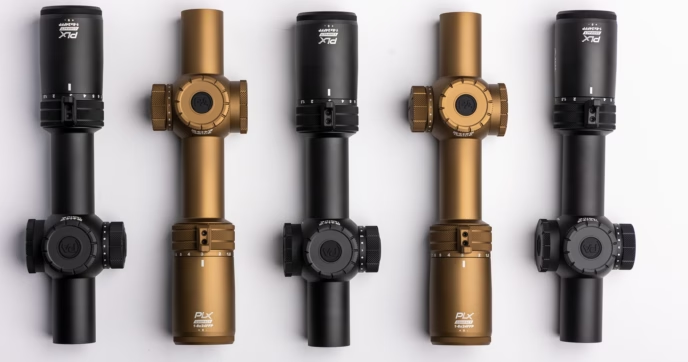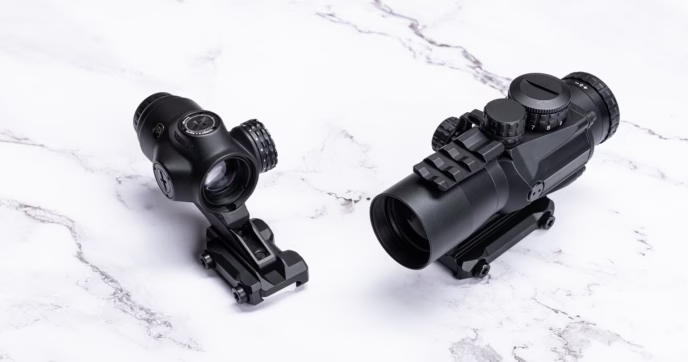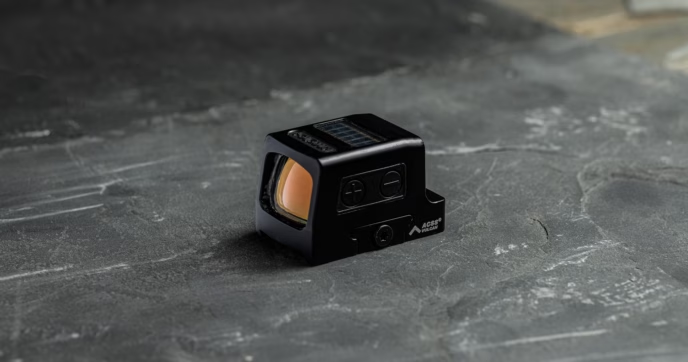Optics are no longer an optional accessory—they have become an essential part of a rifle’s performance. Take a walk down the firing line at your local range, and you’ll scarcely see a rifle without one. Iron sights, while still valuable, have largely been relegated to a backup measure, their primary role replaced by modern optics that allow users to see farther, engage more quickly, and perform with greater accuracy. Among the most popular options are low power variable optics (LPVOs) and prism scopes, both of which have exploded in popularity over the past decade.
The choice between these two categories of optics has become one of the most frequently discussed topics among hunters, competitive marksmen, law enforcement professionals, and enthusiasts alike. Each system offers unique benefits, and each has limitations that make it more or less suited to certain applications. For the rifleman who wants to maximize the effectiveness of their rifle, understanding these differences is essential.
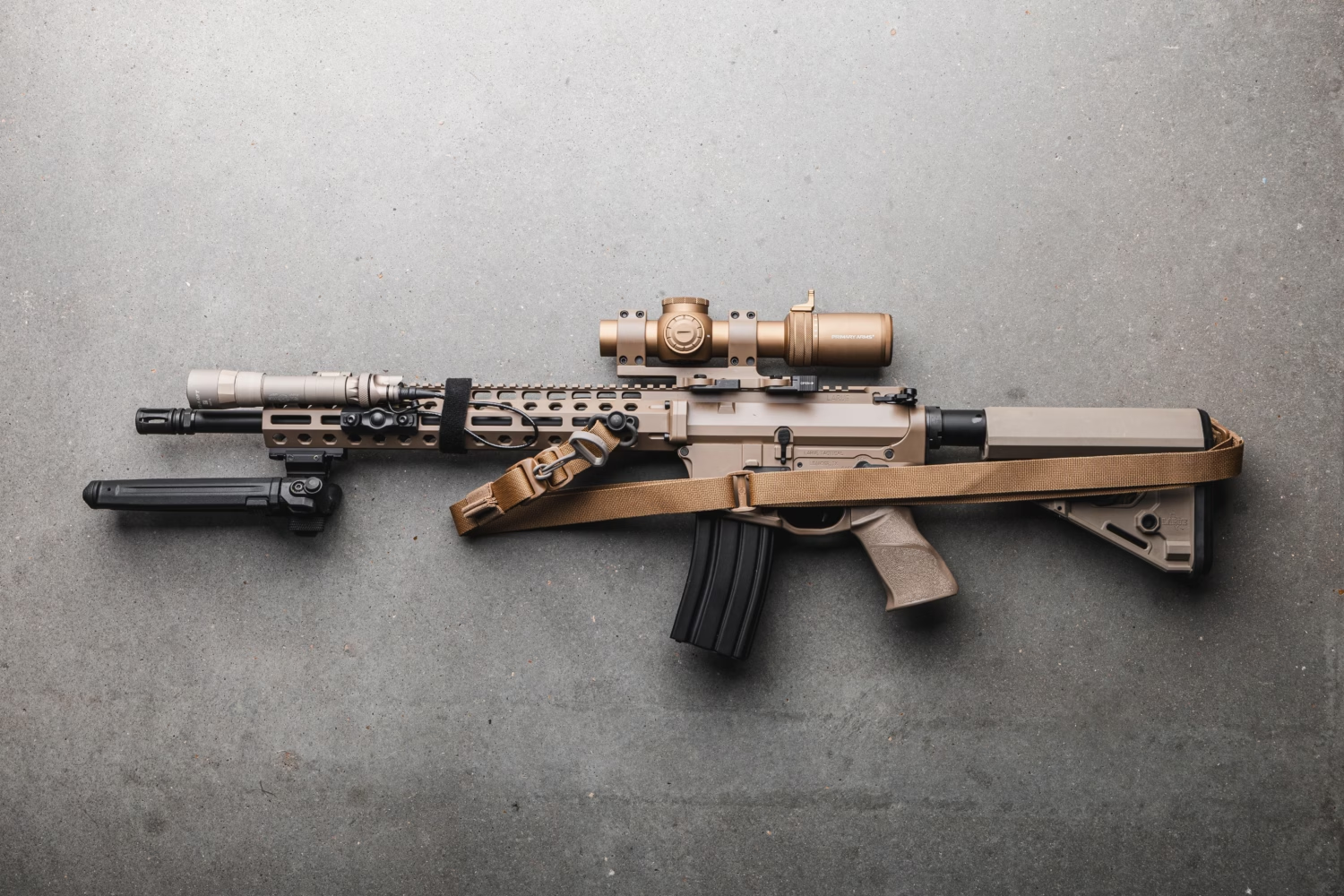
What is an LPVO?
LPVO stands for Low Power Variable Optic. As the name suggests, LPVOs are scopes that provide a variable magnification range starting at or near 1x and extending upward. Common magnification ranges include 1–4x, 1–6x, 1–8x, and even 1–10x in modern designs, most of which are capable of landing hits across the full range of an AR-15. This variable power allows users to operate with a reflex-style view at 1x, while quickly dialing up to higher magnification when greater precision or longer-distance engagement is required.
Mechanically, LPVOs function like other variable-power scopes, using a system of lenses that move relative to one another as the operator adjusts the magnification ring. This optical system provides flexibility at the cost of weight and complexity. Because of the wide magnification range and need for large, high-quality lenses, LPVOs are usually heavier than comparable prism optics.
Another defining feature of LPVOs is the reticle. Most modern LPVOs include illuminated reticles designed for speed at 1x and precision at higher magnification. Many feature ballistic drop compensation (BDC) marks, wind holds, or ranging tools that allow users to account for bullet trajectory without adjusting turrets. This makes LPVOs extremely versatile and well-suited to rifles chambered in cartridges like 5.56 NATO, .308 Winchester, or 6.5 Creedmoor, where a single rifle might be used for close-quarters drills one day and mid-range steel targets the next.
What makes an LPVO different from higher-power precision optics is the starting magnification. A precision rifle scope may begin at 4x or 5x and extend to 25x or beyond, making it excellent for long-range precision but poorly suited to close-quarters work. LPVOs, by contrast, are designed to do both, sacrificing extreme magnification for a balance between speed and distance capability.
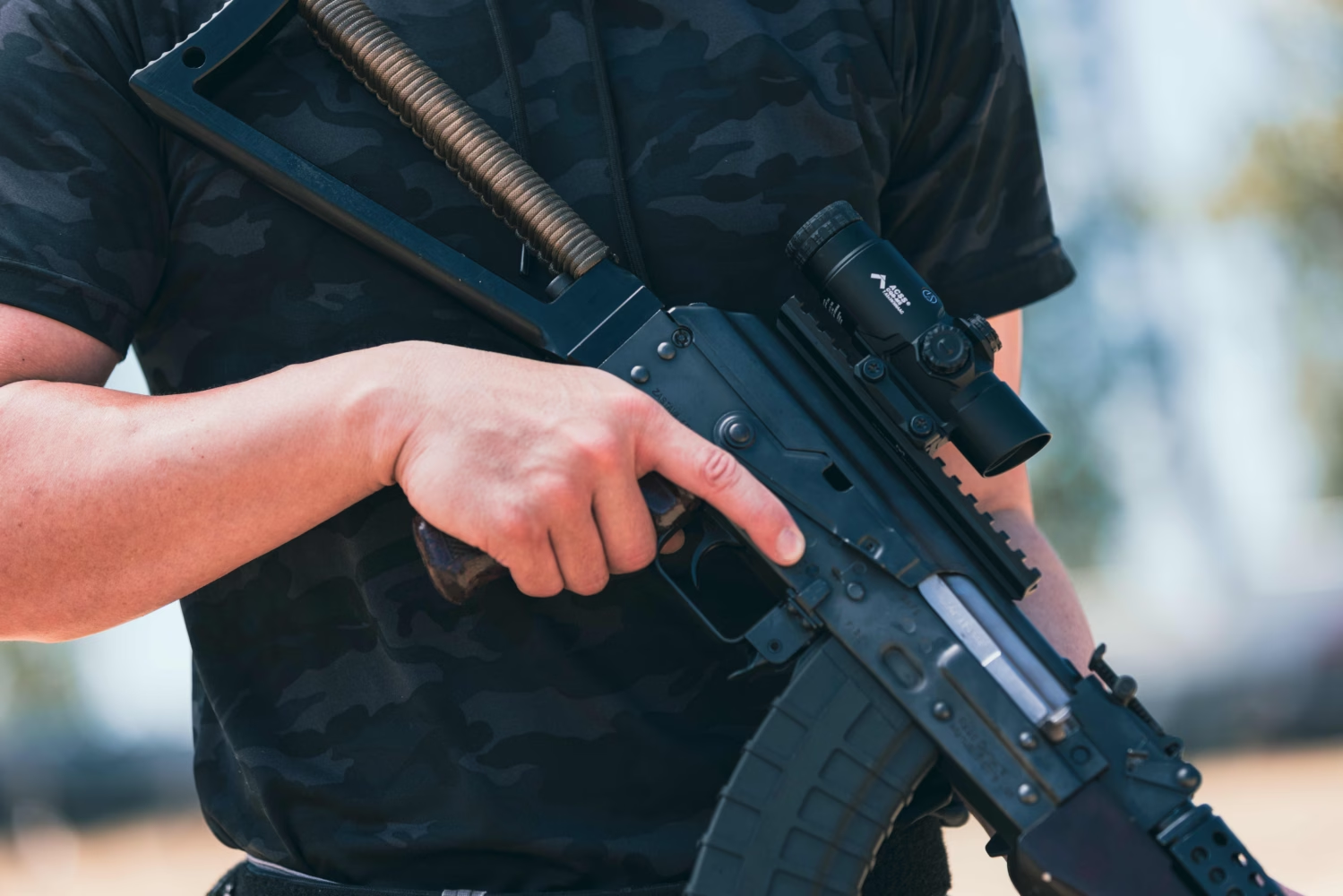
What is a Prism Optic?
Prism optics, often called prism scopes, use a very different optical system. Instead of relying on multiple moving lenses to provide variable magnification, prism scopes use a fixed magnification design with a glass prism to bend and focus the light path. This allows them to remain compact while still offering high clarity and the ability to incorporate etched reticles.
Prism scopes are available in fixed magnifications, most commonly 1x, 3x, and 5x. A 1x prism offers many of the advantages of a red dot sight, but with the benefit of an etched reticle that remains visible even without illumination. This feature makes prism scopes especially popular with marksmen who have astigmatism, as etched reticles eliminate the starburst effect common to LED-based red dots. At 3x or 5x magnification, prisms provide excellent clarity for mid-range engagements, though they lack the adaptability of variable optics.
Compared to traditional scopes, prism optics are much smaller and lighter, since they do not need long tubes or large objective lenses. They also tend to be more rugged, as their optical design has fewer moving parts. The main tradeoff is flexibility: a prism optic is locked at its chosen magnification level. If you select a 3x prism, you will always have 3x magnification, which may be ideal for some situations but limiting in others.
Prism vs. LPVO: Pros and Cons
At a high level, LPVOs offer flexibility and adaptability, while prism scopes provide simplicity and rugged reliability. LPVOs excel in scenarios where the user must transition between close-quarters engagements and longer-range precision. They allow the user to dial up magnification as needed, providing an “all-in-one” solution. However, this comes at the cost of weight, complexity, and sometimes price.
The best prism scopes, on the other hand, are compact, lightweight, and exceptionally clear. Their etched reticles function without batteries, and their durability makes them attractive for users who want a dependable optic without moving parts. The drawback is the lack of variable magnification. Prisms are best suited to users who know the majority of their engagements will fall within a specific distance bracket.
The decision between the two ultimately comes down to priorities: do you value versatility above all else, or do you prefer rugged simplicity?
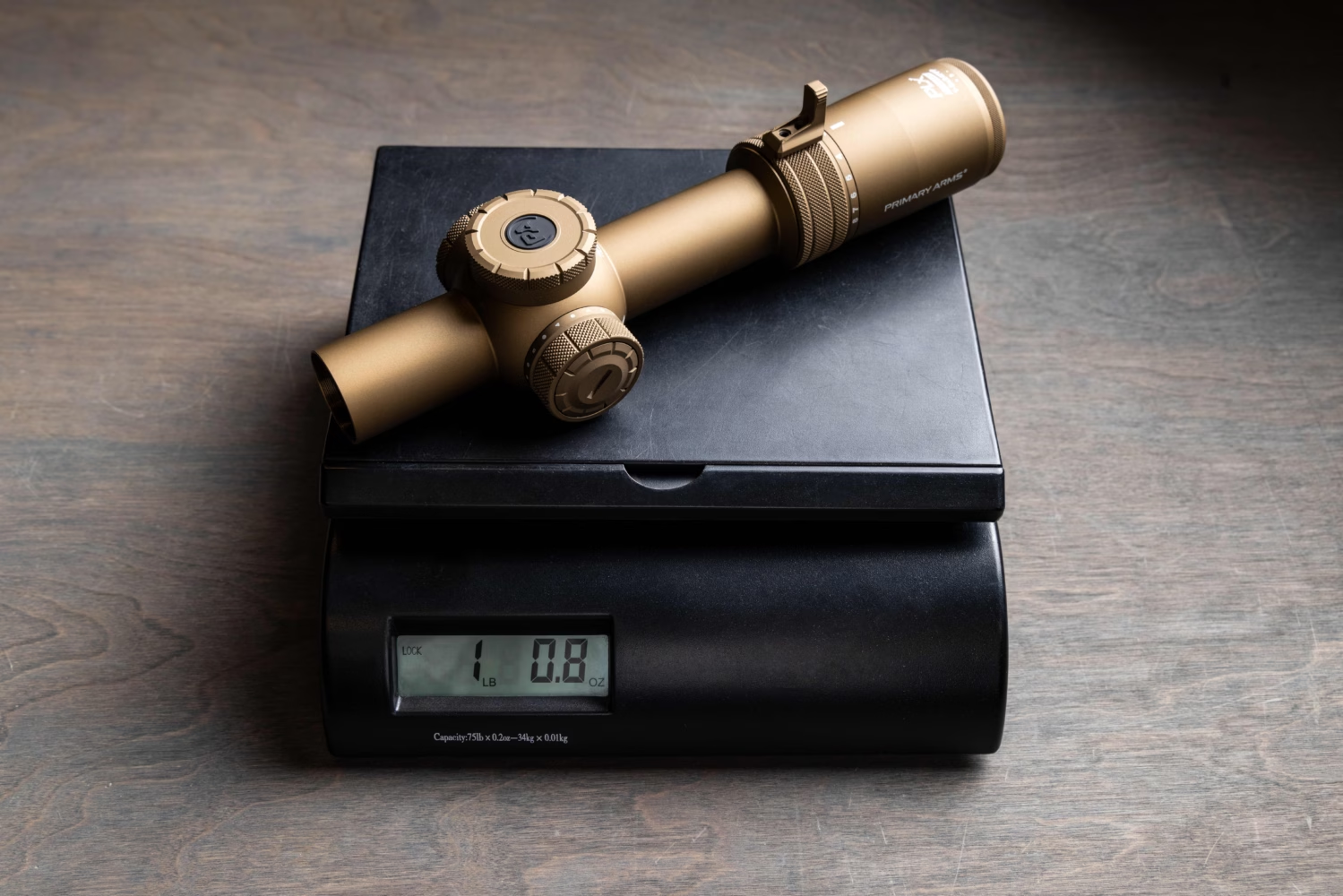
Prism vs. LPVO: Weight
Weight is a critical factor for many firearm enthusiasts, especially those carrying a rifle for extended periods in the field. LPVOs, due to their large lenses, turrets, and magnification systems, tend to be heavier than prism optics. Even a lightweight Primary Arms LPVO can often weigh 16–20 ounces, and when combined with a robust mount, can add more than a pound to the rifle.
Prism optics, by contrast, are compact and lightweight. A typical 3x prism might weigh around 9–12 ounces, mount included, although lightweight designs such as the Primary Arms SLx 3x Microprism can weigh as little as 8 ounces or less. For a lightweight defensive carbine or a hunting rifle where every ounce matters, the weight savings can be substantial.
Prism vs. LPVO: Field of View
Field of view (FOV) describes how much of the environment the user can see through the optic, and it plays a central role in target acquisition and situational awareness. At 1x, LPVOs are known for offering a wide field of view that allows users to scan their surroundings with both eyes open, making them highly effective for close-quarters use. Premium models can offer huge fields of view, with the Primary Arms® PLx® RDB® 1-8x boasting a massive 121 feet at 100 yards on 1x magnification. This expansive perspective is one of the key reasons why LPVOs have gained so much traction in competitive and tactical applications.
Prism optics, on the other hand, are fixed-power designs, so their field of view varies depending on their magnification. A 1x prism offers a similar role to a red dot or LPVO at 1x, though the window is often slightly smaller than that of a premium LPVO. However, once you move into magnified territory, prisms hold a noteworthy advantage.
At the same magnification level, a prism optic typically provides a wider field of view than an LPVO set to the same power. For example, a 3x prism generally allows users to see more of the environment than an LPVO dialed to 3x. This comes from the inherent efficiency of the prism design, which requires fewer lenses and less internal optical adjustment.
The end result is that prisms feel more open and less tunnel-like at a given magnification, which can make a significant difference when scanning for targets or tracking movement. LPVOs remain superior at 1x due to their variable design and panoramic presentation, but once magnified, prisms often deliver a more generous and natural field of view.
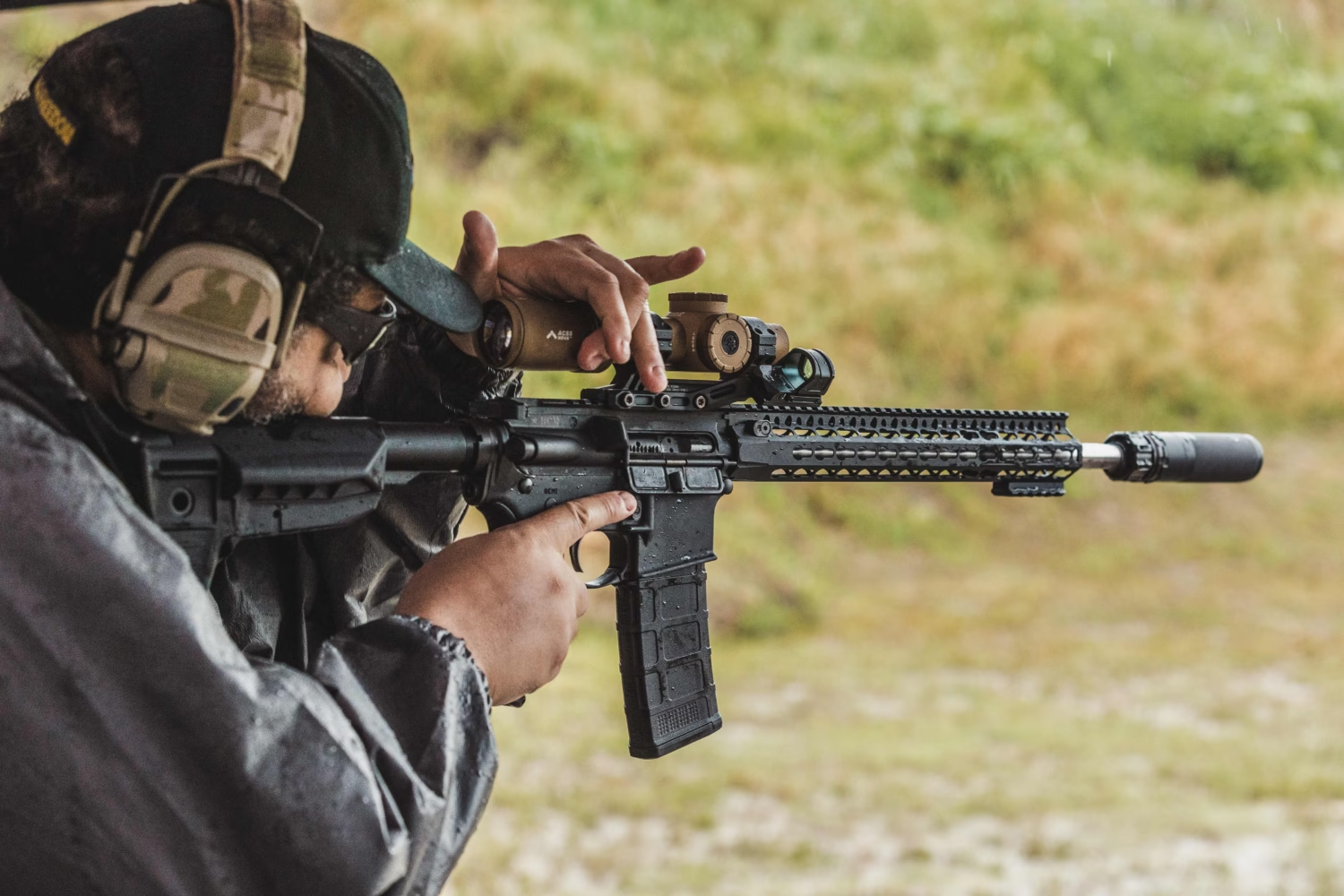
Prism vs. LPVO: Magnification
Magnification is where LPVOs shine. The ability to move seamlessly from 1x to higher magnification levels makes them suitable for an enormous variety of tasks. Users can clear a short-range stage at 1x, then transition to 6x or 8x for engaging steel targets at 400 yards without ever changing optics. This flexibility has made LPVOs especially popular among military and law enforcement professionals who need a “do-it-all” optic, as well as competitors who must engage a variety of stages with a single firearm and optic.
Prisms, being fixed-power, cannot compete in versatility. However, their fixed magnification can be an advantage in its own right. With no need to adjust magnification, a prism optic provides a consistent sight picture every time. Users who primarily engage targets at 100–300 yards may find a 3x or 5x prism to be more than adequate.
Prism vs. LPVO: Eye Relief / Eye Box
Eye relief refers to the distance your eye must be from the optic to see a full sight picture, while the eye box refers to how much side-to-side and vertical movement is allowed while still maintaining a usable sight picture. These factors are critical for target acquisition speed and overall usability.
LPVOs often have longer eye relief and relatively tight exit pupils, particularly at higher magnifications. This means that in practice, LPVOs are fairly forgiving of how close or far your head is from the ocular lens, but any lateral movement can throw off your sight picture. While top-tier LPVOs mitigate this issue, many affordable models can feel restrictive, requiring the user to position their head precisely for a clear sight picture. This can slow down target acquisition, especially in dynamic environments.
Prism scopes generally offer shorter but more forgiving eye boxes. Eye relief is often limited, which can be an issue on firearms with a long length of pull, but the exit pupil can be quite generous, meaning that these optics are very forgiving of head position, so long as you are close enough to the ocular lens.
Certain modern prisms, such as Primary Arms 1x Microprisms, feature especially generous eye relief resulting in an expansive eye box that makes it easier to acquire targets quickly, even from awkward firing positions. This advantage helps explain why prisms remain popular among marksmen who value speed and consistency in their optic.
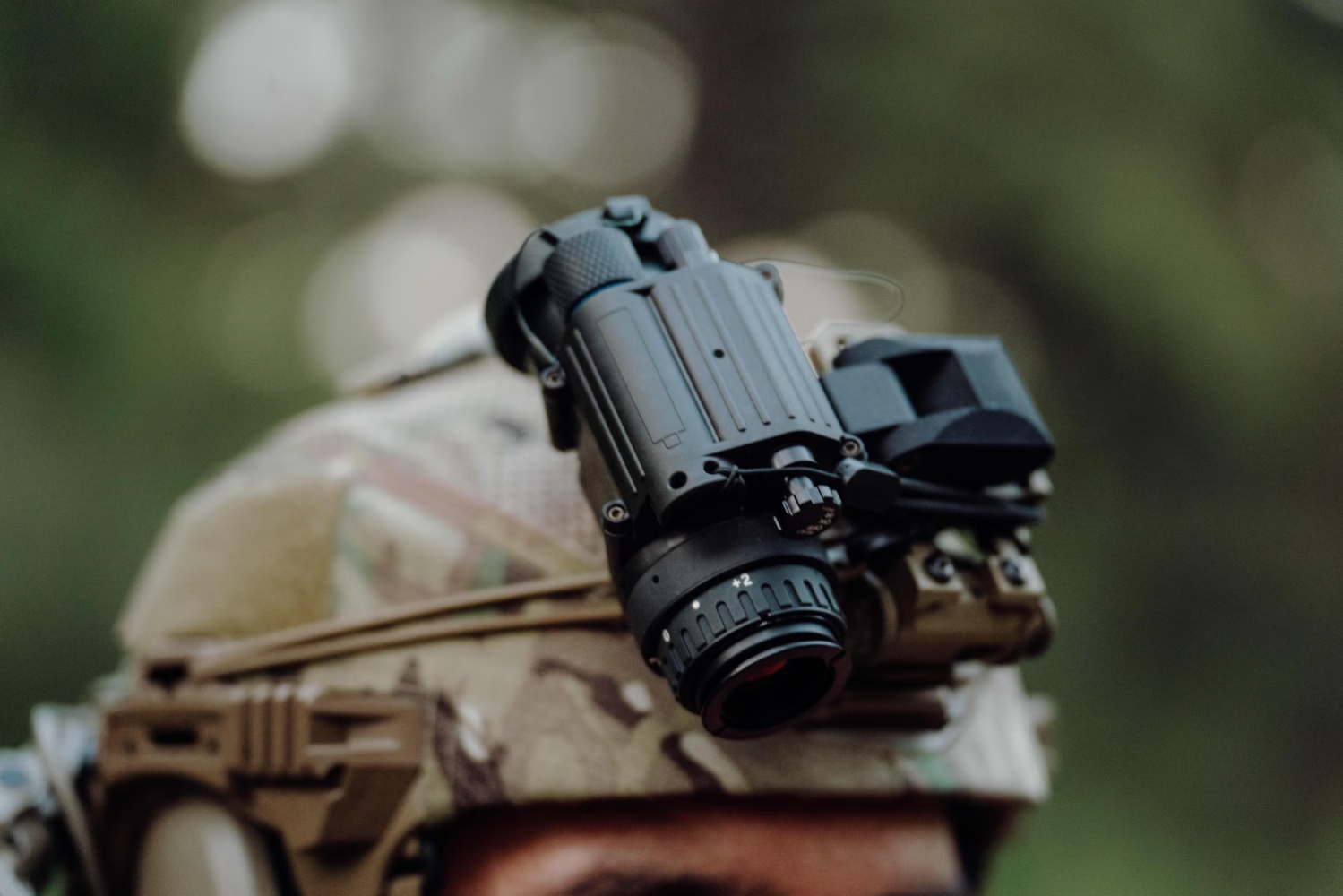
Prism vs. LPVO: Night Vision Compatibility
Night vision adds another layer of complexity to optic selection, since not every illuminated reticle is equally usable with NV devices. Both LPVOs and prism optics rely on reticle illumination to be functional under night vision. While their etched reticles may remain faintly visible without illumination, the contrast is generally too low to be practical in the green or white phosphor image of a night vision device. As a result, usable night vision performance depends heavily on how well the optic’s illumination system is tuned for NV use.
Many LPVOs include illumination, but not all models feature dedicated night vision settings. In lower-end or mid-tier scopes, the lowest brightness levels often bloom excessively under night vision, washing out the reticle and degrading the sight picture. Higher-end LPVOs typically address this issue with ultra-low brightness settings designed specifically for night vision compatibility, but these features come at a premium price.
Prism optics also require illumination for use under night vision, yet their design often makes them easier to manage. Unmagnified prisms in particular, such as the Primary Arms GLx® 1x Microprism™, pair very naturally with night vision devices. Their 1x magnification avoids the distortion and parallax issues that can arise when trying to use a magnified LPVO in front of a night vision monocular. Their forgiving eye box becomes especially valuable in this application as well. This makes a 1x prism significantly easier and more intuitive to use than an LPVO for passive aiming under night vision.
In short, both LPVOs and prisms are technically compatible with night vision, but the practical experience differs. LPVOs require high-quality illumination systems to perform well, while prisms—especially unmagnified models—offer a smoother, more forgiving pairing with night vision setups.
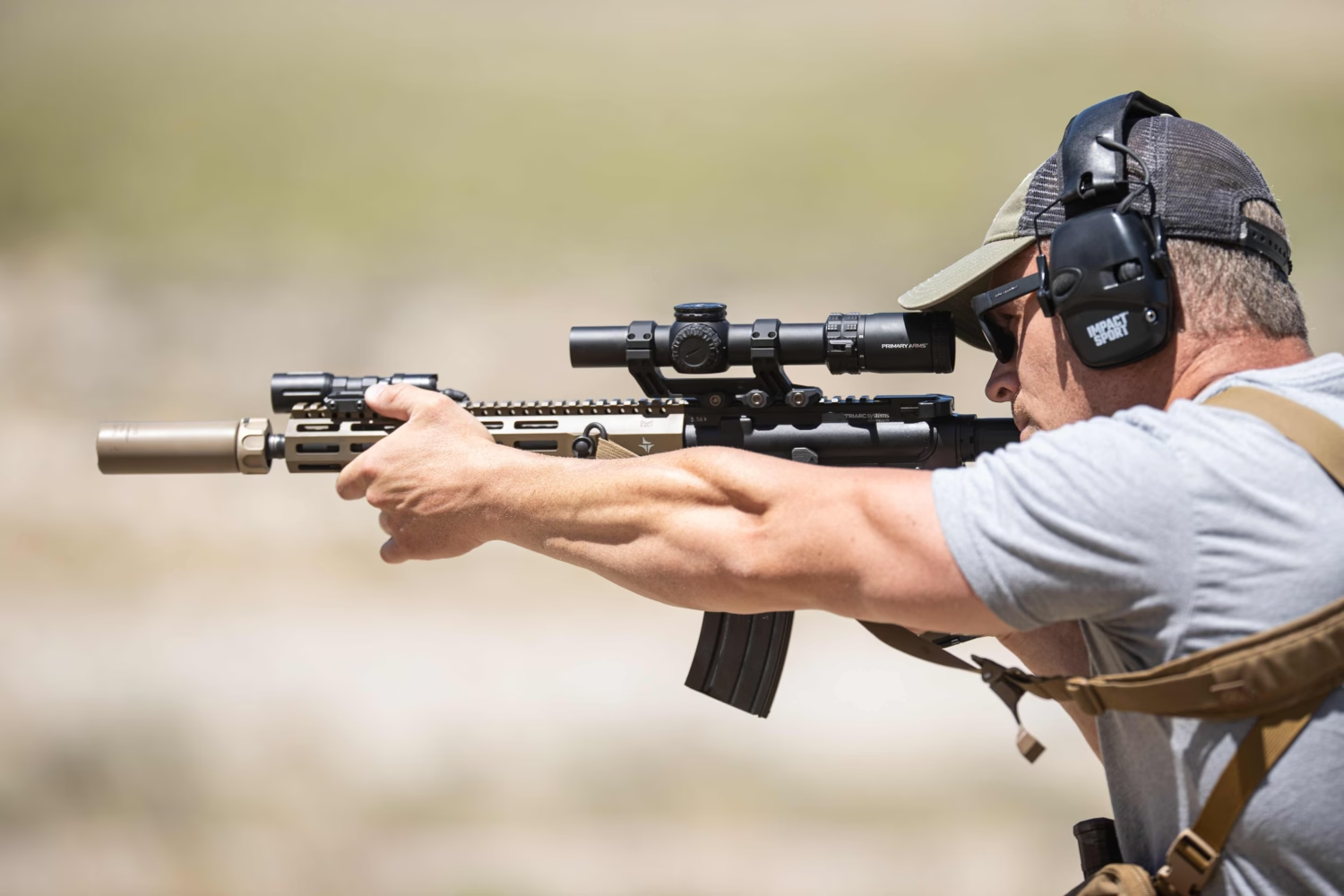
Prism vs. LPVO: Best Applications
When evaluating which optic is best for your rifle, it helps to take a step back and consider the broader strengths and weaknesses of each system. Prism scopes excel in simplicity, durability, and clarity. Their fixed magnification and etched reticles make them fast, reliable, and intuitive to use, particularly for users who value quick target acquisition. On the downside, prisms are locked into a single magnification, which limits their adaptability beyond a defined range envelope.
LPVOs, by contrast, offer unmatched versatility. A single optic that can move from a reflex-style 1x view to 6x, 8x, or even 10x magnification allows users to handle an enormous range of scenarios with confidence. The tradeoff is weight, complexity, and—depending on the optic—sometimes a more restrictive eye box. They also demand more deliberate adjustment, which can slow down the user in fast-paced environments.
These differences shape where each optic shines. Prism optics are generally best suited for short to intermediate ranges, while LPVOs thrive in medium to long-range engagements. A 1x prism is exceptional for short-range target engagement, offering many of the benefits of a red dot but with a crisp, etched reticle that stays visible in all lighting conditions. The generous eye box in modern microprism designs allows for rapid engagement even from awkward positions, making them ideal for defensive use or fast-action drills. Moving up to 3x or 5x prisms, users gain additional reach while still enjoying a wide field of view and straightforward usability within 100 to 300 yards.
LPVOs, by comparison, lean into precision. At higher magnification, they allow for more accurate identification of targets and finer shot placement, especially at distances where a prism might feel underpowered. This adaptability makes them more effective for riflery disciplines where distances vary widely, or where the ability to dial in magnification gives a clear advantage. The cost, however, is that LPVOs may be slower at close range, where a prism or red dot-style optic is more intuitive.
These distinctions become especially clear when applied to specific use cases. For hunting, the best choice depends on the environment. In dense woods or brush country where shots are typically under 150 yards, a 1x or 3x prism offers simplicity and speed, allowing hunters to track moving game more easily. In open fields or western terrain where longer shots are the norm, an LPVO with 6x or 8x magnification provides the reach necessary for precise bullet placement.
In competitive applications, particularly 3-Gun or other action rifle matches, LPVOs dominate the landscape. The ability to instantly transition between near-contact distances and steel plates out to several hundred yards is invaluable in these formats. A high-quality LPVO offers both the speed needed for close targets and the magnification required for distant precision. Prisms still hold value here, particularly for divisions or matches that emphasize speed at short ranges, but in most cases, LPVOs deliver more flexibility across the varied stages of competition.
For precision marksmanship, LPVOs are the clear winner. While neither prisms nor LPVOs replace dedicated long-range scopes—even the best LPVO for an AR-15 will struggle at truly long ranges—an LPVO offers enough magnification and reticle sophistication to stretch rifles out to 600 yards or more, depending on cartridge and skill. Prisms, with their fixed magnification, simply cannot provide the same level of adaptability or fine target detail.
In personal or home defense, however, the equation tilts in favor of prism optics. A 1x prism is fast, reliable, and extremely intuitive, making it an excellent choice for defensive carbines. Its etched reticle ensures usability even without illumination, and its compact size keeps rifles lightweight and maneuverable. While LPVOs remain usable for defense, they are far from ideal, as the need to manipulate magnification and manage tighter eye relief can make them slower in immediate, high-stress encounters.
In the end, prisms and LPVOs are not competitors so much as complementary tools, each excelling in its own arena. For short to intermediate ranges where speed and clarity matter most, prisms are difficult to beat. For medium to long ranges where adaptability and precision are paramount, LPVOs deliver unmatched performance. The right optic for your rifle depends on your environment, your discipline, and the role you expect your rifle to play.
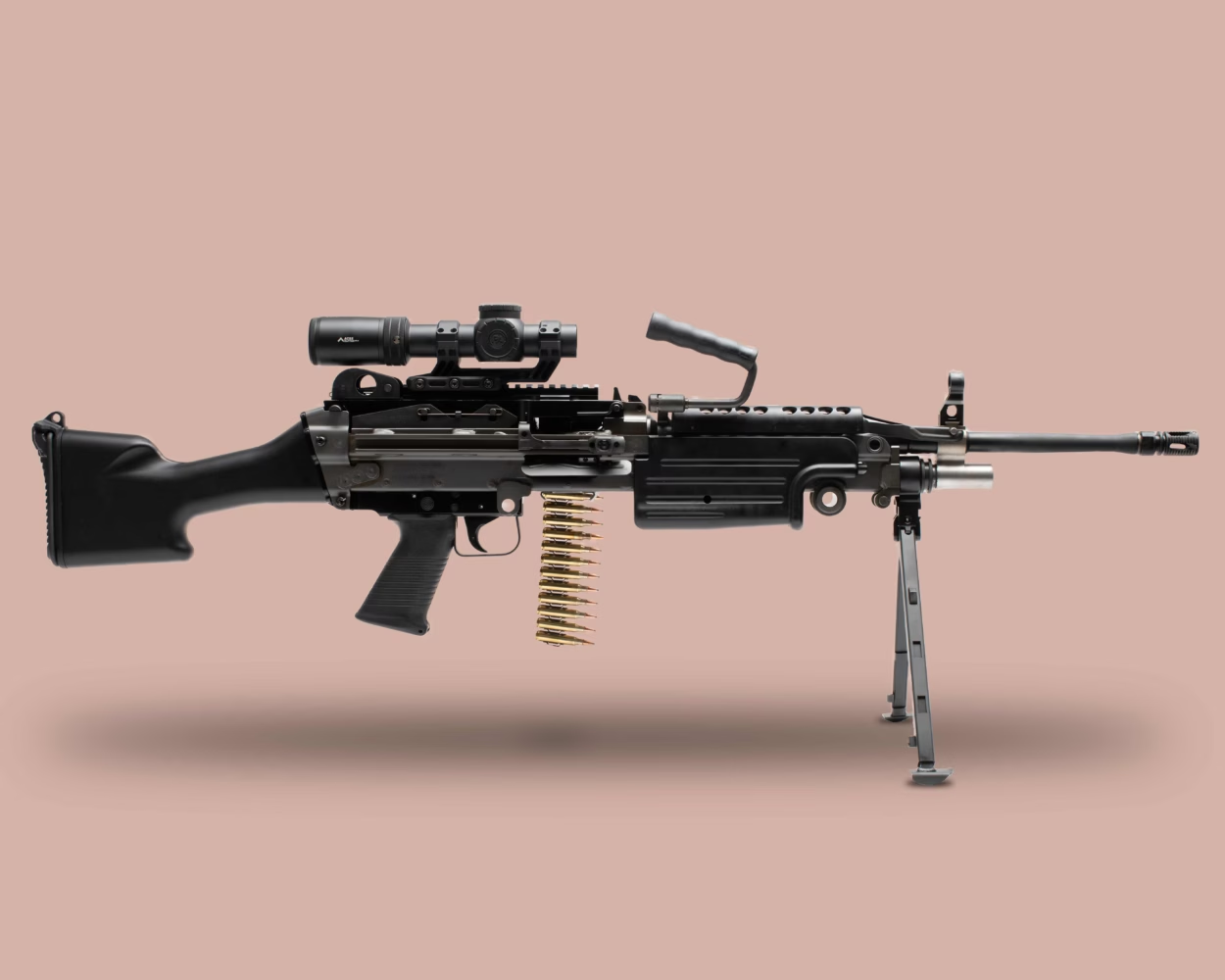
Conclusion
The debate between prism scopes and LPVOs is not about declaring one as universally superior. Instead, it is about recognizing that each optic brings different strengths to the table. LPVOs offer flexibility and adaptability, serving as a single optic that can handle close quarters and medium-range precision with equal competence. Prism scopes offer rugged simplicity, lightweight construction, and optical clarity, making them excellent for users who value reliability and speed within a defined engagement range.
Choosing between the two comes down to your rifle’s purpose, your environment, and your personal preferences. Both LPVOs and prisms represent the best of modern optic technology, and by understanding their advantages and limitations, you can select the tool that best enhances your rifle and your riflery experience.
